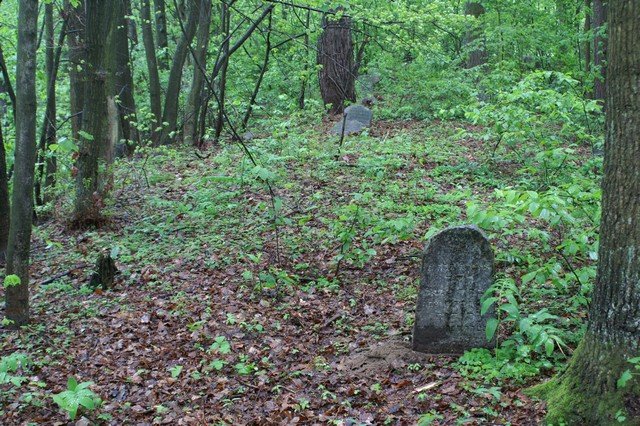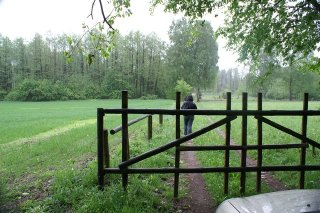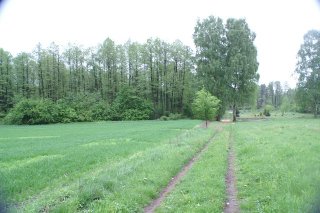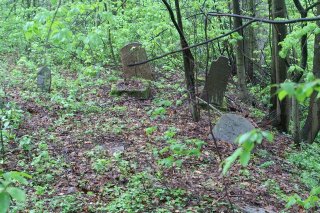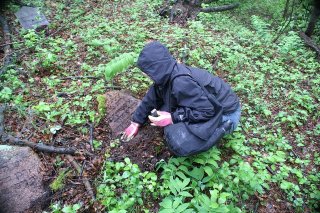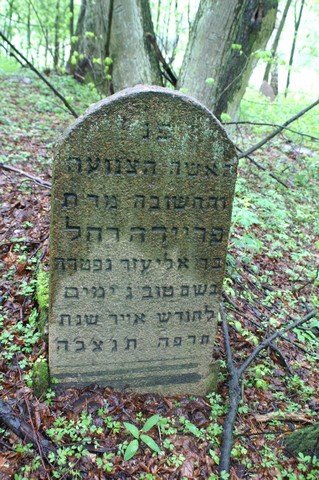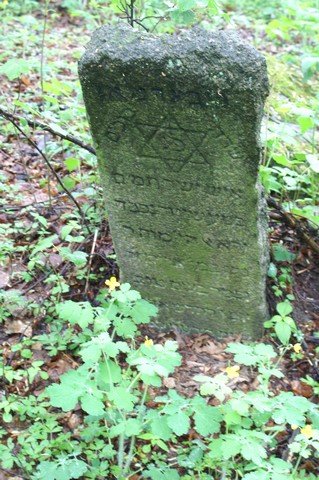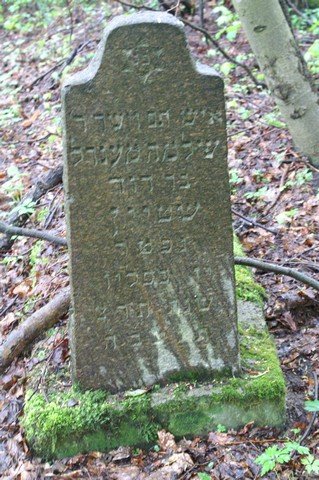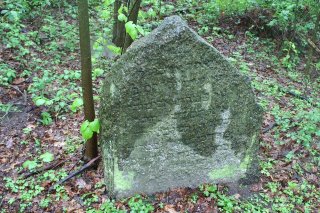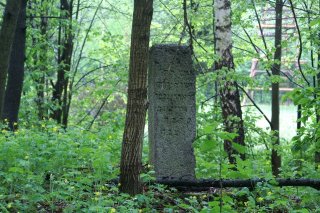BIALYGen
Bialystok Region Jewish Genealogy Group
GRODNO GUBERNIYA POLAND IMAGING PROJECT
SURVEY OF JEWISH CEMETERIES
by Heidi M. Szpek, Ph.D.
Associate Professor, Department of Philosophy and Religion Studies
Central Washington University
May 2007
Partial funding provided by: The Department of Philosophy & The Office of International Studies and Programs Grant Committee,
Central Washington University, Ellensburg, Washington 98926, USA
Back to Poland Imaging Project Cemeteries Index
|
Knyszyn
Image 1
Directions: From Bialystok, take Highway 65 north about 25 km. to Knyszyn. Turn right onto 671 going NE into town. In about 1 km you will be in the Rynek. Turn right onto Ul. Bialostocki (which heads towards the town of Chraboly and eventually back to Bialystok). Pass through the next intersection (with Ul. Południowa at right), continue on crossing the small Jaskranka River onto a dirt road. Pass through the first intersection of field roads and about .5 km on your left is a locked wooden gate blocking a road that leads to the Jewish cemetery (Image 2). Park at the gateway and walk around the gate onto the dirt road. The Jewish cemetery will be in the forested area at left (Image 3); a private residence stands a bit further up the road at right. Just before the forested area begins a barbed wire fence that parallels the road and cemetery, making access a bit difficult. Enter the field just before the barbed wire fence begins, hop across the stream and you’ll be at the eastern edge of the cemetery.
Conditions: The Jewish cemetery of Knyszyn is actually situated on the ridges of what were 16 th century royal pools of a Polish manor house. On entering the cemetery, according to Wisniewski (Jewish Bialystok, 18), is the ‘new’ Jewish cemetery, opened in 1930. Proceeding along the ridges will take the visitor into the old Jewish cemetery established in the late 18th century. The area is pine forest with dense vegetation, muddy, humid, with standing water in the pools, thus (seasonally) heavy with mosquitoes and ticks (Images 1, 4-6). It is easy to get lost in the labyrinth of ridges. Most of the matzevoth are in situ, though some are fallen and partially covered with earth or moss, and quite legible (Images 7-11). The inaccessibility of this sight is its preservation, as attempts to remove matzevoth (as did occur at other Jewishcemeteries during and after WWII), would require enormous efforts. The greatest threat to this cemetery is the vegetation and potential for matzevoth to sink into the swampy pools. Note: The visitor should take precautions against the bugs, especially the ticks, certain varieties of which in NE Poland are known to cause serious illness.
Back to Poland Imaging Project Cemeteries Index
|
||||||||||||||||||||||


